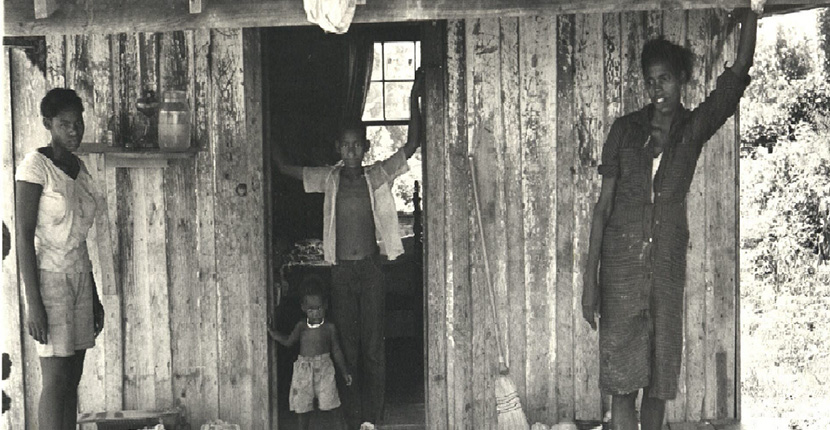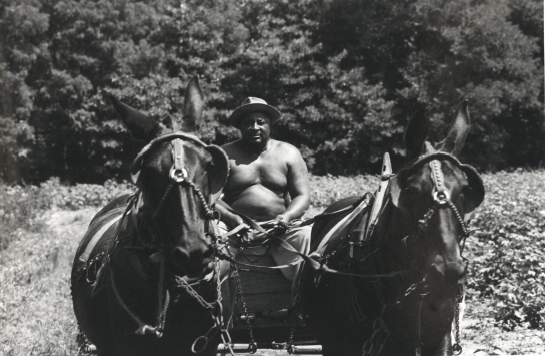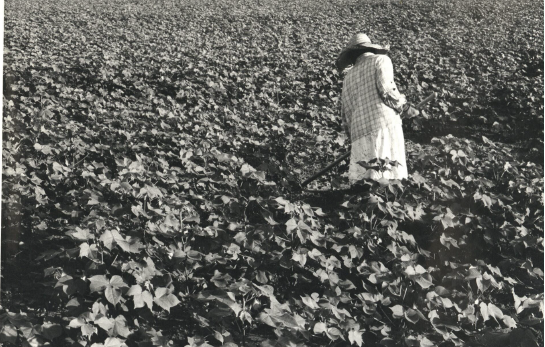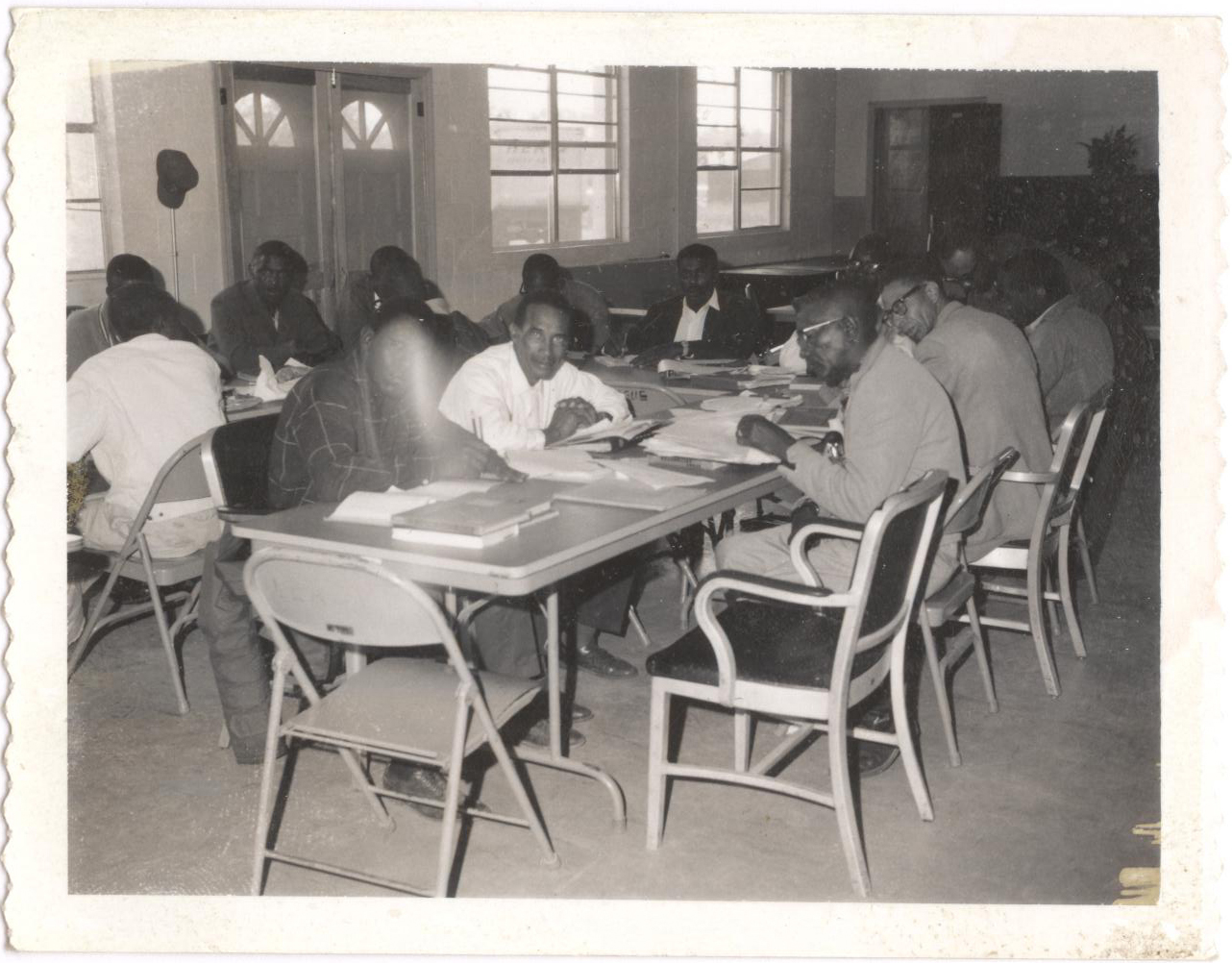Tent City: Stories of Civil Rights in Fayette County, Tennessee
Daily Conditions for the Sharecropper
The sharecropper and his family's typical day consisted of long hours working the fields. Rain or shine, sick or well, from dusk to dawn, sharecroppers sowed, weeded, picked, and hauled cotton. By the end of the day, the laborers would return home exhausted. The cycle never ended—the next day, the sharecropper started the process all over again.

A family standing on the porch of their Fayette County sharecropping home. The size
and deteriorated state of Black people's homes were not uncommon for the early to
mid twentieth century.
Source: Nick Lawrence
Sue Roark, a white sharecropper's daughter in adjacent Tipton County, remembers, "my family sharecropped for the same family from 1944 until the 1960's. We lived in a four-room house and had to do upkeep on it. There was no indoor plumbing. We had no electricity until the late 1940's or early 1950's." In the depositions taken for U.S. v Beaty, one sharecropper describes a home with only one livable room because half of the home had collapsed and the landlord could not be bothered to fix it.
The homes provided by the landowners were usually barely more than shacks, poorly constructed and lacking electricity and running water, well into the mid-20th century. After being evicted from her home and moved into Tent City, Georgia Mae Turner, a Fayette County sharecropper, noted:
"This tent is better than my house with Mrs. McNamee. Lord, so many cracks in that house, you could shake hands with me anytime...when it rained, it would be wet all over the house, the hall, the porch, and the kitchen...You couldn't keep a snake or nothing out of that house; cats, dogs, you couldn't keep them out at night" [1]. G.M. Turner, Fayette City sharecropper and eventual Tent City resident
 Sam Taylor, a local landowner, brings his mules back from the fields after a long day's work. Source: Nick Lawrence provided both the image and the history behind the photograph. |
Although some white sharecroppers in the American South suffered under similar poor conditions, by virtue of their race, white sharecroppers had more options to climb out of the grinding lifestyle of endless work and poverty. Most importantly, they were white and not subject to discriminatory customs and laws which kept African Americans as second-class citizens.
Before the 1960s, farmers in the us moved away from sharecropping in favor of new mechanized practices. However, sharecropping remained central to the cotton industry in West Tennessee, not waning until during the 1960s.
|
|
 Fayette County sharecropper chops cotton. She is wearing a hat and long clothing to protect herself from both the sun and the prickly cotton plant. Source: Nick Lawrence. |
As long as sharecroppers were available, landowners were reluctant to invest capital into machinery because they had a low-cost source of labor ready and willing to work their fields. However, because of the events that unfolded in Fayette County in the late 1960's, farmers in Fayette County were pushed into 20th century farming practices—adopting large-scale farming equipment. The introduction of machinery made farming more efficient, requiring fewer laborers to work the fields.
 Adult literacy program at the OFCCWL community center by activists. |
Following evictions and the onset of demands by the activists of the Fayette County movement, job prospects in Fayette County were severely reduced for sharecroppers. This lead to the exodus of younger African American residents to the cities—Memphis, Chicago, Detroit, New Orleans—places that offered more jobs for labor and skilled construction, railroad, factory, retail, and domestic work, and more educated teaching positions.
|
|
Rev. June Dowdy, Fayette County Activist source: Operation Freedom recorded interview, c. 1964. |
